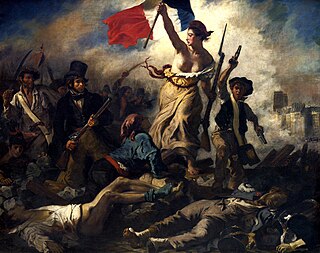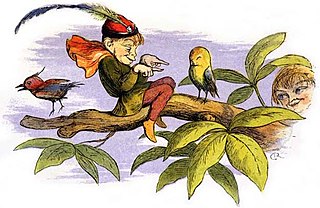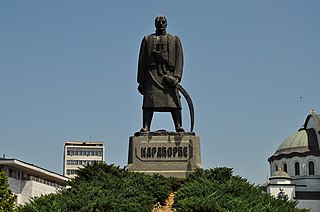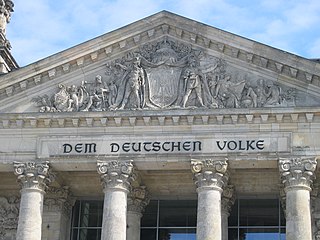 W
WRomantic nationalism is the form of nationalism in which the state derives its political legitimacy as an organic consequence of the unity of those it governs. This includes such factors as language, race, ethnicity, culture, religion, and customs of the nation in its primal sense of those who were born within its culture. It can be applied to ethnic nationalism as well as civic nationalism. Romantic nationalism arose in reaction to dynastic or imperial hegemony, which assessed the legitimacy of the state from the top down, emanating from a monarch or other authority, which justified its existence. Such downward-radiating power might ultimately derive from a god or gods (see the divine right of kings and the Mandate of Heaven).
 W
WBunad is a Norwegian umbrella term encompassing, in its broadest sense, a range of both traditional rural clothes as well as modern 20th-century folk costumes. In its narrow sense the word bunad refers only to clothes designed in the early 20th century that are loosely based on traditional costumes. The word bunad in itself is a 20th-century invention.
 W
WClémence Isaure is a quasi-legendary medieval figure credited with founding or restoring the Acadèmia dels Jòcs Florals or Academy of the Floral Games. She is supposed to have left a legacy to fund awards in the form of gold and silver flowers that the city would award annually to the best poets.
 W
WThe January Uprising was an insurrection principally in Russia's Kingdom of Poland aimed at the restoration of the Polish–Lithuanian Commonwealth. It began on 22 January 1863 and continued until the last insurgents were captured by the Russian forces in 1864.
 W
WThe Lion of Flanders, or the Battle of the Golden Spurs is a major novel first published in 1838 by the Belgian writer Hendrik Conscience (1812–83) and is an early example of historical fiction. The book focuses on the medieval Franco-Flemish War and the Battle of the Golden Spurs of 1302 in particular. It is written in Conscience's typical stylistic romanticism and has been described as the "Flemish national epic".
 W
WThis is a list of national costumes, mainly bunads, worn by either members of the Norwegian people or members of the Sami people of Norway or members of the Kven people of Norway.
 W
W"Merry England", or in more jocular, archaic spelling "Merrie England", refers to an English autostereotype, a utopian conception of English society and culture based on an idyllic pastoral way of life that was allegedly prevalent in Early Modern Britain at some time between the Middle Ages and the onset of the Industrial Revolution. More broadly, it connotes a putative essential Englishness with nostalgic overtones, incorporating such cultural symbols as the thatched cottage, the country inn and the Sunday roast.
 W
WRomânul, was a political and literary newspaper published in Bucharest, Romania, from 1857 to 1905. Established as the leading voice of Romanian liberalism in the state of Wallachia, it had direct connections to the radical ideology of Western Europe. Its founder and director was the aristocrat C. A. Rosetti, known as Romantic poet, Masonic promoter and left-wing activist, seconded by the brothers Ion C. Brătianu and Dimitrie Brătianu. Românul's roots were planted in the 1848 revolutionary movement, whose press organ, Pruncul Român, was a direct predecessor.
 W
WSerbian nationalism asserts that Serbs are a nation and promotes the cultural and political unity of Serbs. It is an ethnic nationalism, originally arising in the context of the general rise of nationalism in the Balkans under Ottoman rule, under the influence of Serbian linguist Vuk Stefanović Karadžić and Serbian statesman Ilija Garašanin. Serbian nationalism was an important factor during the Balkan Wars which contributed to the decline of the Ottoman Empire, during and after World War I when it contributed to the dissolution of the Austro-Hungarian Empire, and again during the breakup of Yugoslavia and the Yugoslav Wars of the 1990s.
 W
WThe Viking revival was a movement reflecting new interest in, and appreciation for Viking medieval history and culture. Interest was reawakened in the late 18th and 19th centuries, often with added heroic overtones typical of that Romantic era. The revival began earlier with historical discoveries and early modern publications dealing with Old Norse culture. The first printed edition of the 13th century Gesta Danorum or the Legend of the Danes by Saxo Grammaticus, came out in 1514 just as book printing began become more practical and printing trade was quickly spreading. In 1555, the Historia de gentibus septentrionalibus, or "History of the northern peoples", by Olaus Magnus was produced. The pace of publication increased during the 17th century with Latin translations of the famous Edda, notably Peder Resen's Edda Islandorum of 1665. The Edda consisted of two 13th century Medieval Icelandic literary works on Norse mythology, written down in the 13th century, but certainly from older oral sources: they are the Prose Edda, and an older collection of poems without an original title now known as the Poetic Edda. The books are the main sources of medieval skaldic tradition of poetry and storytelling in Iceland and Norse mythology.
 W
WThe German noun Volk translates to people, both uncountable in the sense of people as in a crowd, and countable in the sense of a people as in an ethnic group or nation.